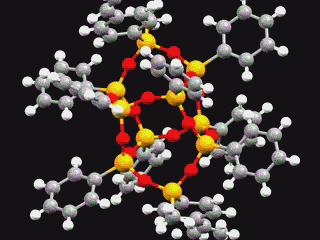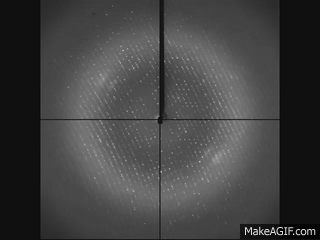Today (April 24, 1960) is the anniversary of the Nobel Prize-winning German physicist Max von Laue for his discovery of the fringe effect of crystals.

Max Theoder Felis Von Laue was
born on October 9, 1879, in Biefendorf, Germany, to Julius Laue and Minna
Gerner. In 1898, he began his compulsory military service in Strasbourg. He
then began studying mathematics, physics and chemistry in 1899 at the
University of Strasbourg, the University of Gottingen and the University of
Ludwig Maximilian. In Munich Kottingen, he was greatly inspired by the
physicists Voldemort Voigt and Max Abraham and the mathematician David Hilbert.
After completing only one semester in Munich, he went to the Friedrich Wilhelms University in Berlin in 1902. There, he studied under Max
Planck, who gave birth to the quantum theory revolution on December 14, 1900.

In Berlin, Laue attended Otto Lummer's lectures on thermal radiation and interference spectroscopy. The effect of this can be seen in Lavin's research paper on the occurrence of interference on plane-parallel plates. For this, he received his doctorate in 1903. After that, Laue spent 1903 to 1905 in Gottingen. In 1906, Laue became an assistant to Privatosent and Blanc in Berlin. He met Albert Einstein for the first time. They became friends. Laue contributed to the adoption and development of Einstein's theory of relativity. He continued as an assistant to Laue Blanc until 1909. In Berlin, he worked on the application of entropy to radiation fields and on the importance of thermodynamics for the synchronization of light waves.


Laue worked at the Institute of
Theoretical Physics from 1909 to 1912, under Arnold Sommerfeld at LMU. During
the Christmas break in 1911 and in January 1912, Paul Peter completed his
doctoral dissertation under Evolt Sommerfeld. During a walk through the English
Garden in Munich in January, Evolt told Lav about the title of his
dissertation. The wavelengths of concern for Evolt were in the visible part of
the spectrum. So the gap between the resonators in the Evoltin crystal model is
much larger than that. Laue seemed distracted and wanted to know what the
effect would be if very small wavelengths were considered. In June, Lowe, Paul
Nipping, and Walter Friedrich at Somerfeld LMU reported on the successful
differentiation of X-rays by Cottingen's physicalized Kesselsoft. For this, Laue
was awarded the Nobel Prize in Physics in 1914.


From 1910 to 1911 he wrote the
first volume of his book on relativity. In 1912, he was invited to the
University of Zurich as a professor of physics. Laue later became 'Max von Laue'.
In 1914 a new chair professor of theoretical physics was created at the
University of Berlin, and Laue was given that position. But Lowe rejected it,
giving it to Max Bourne. From 1914 to 1919, Laue was a Professor of Theoretical
Physics at Frankfurt University. Since 1916, he has been involved in the
development of vacuum tubes for use in military telephone and wireless
communications at the University of Worcester. In 1919, Laue was invited to the
University of Berlin as a Professor of Theoretical Physics. He remained in office
until 1943. He was declared an Emeritus a year before the mandatory retirement
age.


Laue, one of the weekly
organizers of the Berlin Physics Colloquium, usually sat in the front row with
Bernstein and Einstein. In 1921, he published the second volume of his book on
relativity. Meissner found that a weak magnetic field inside a superconductor
decomposes rapidly to zero. This is called the Meissner effect. In 1932 Laue
showed that the threshold of the applied magnetic field destroying the
superconductivity varies with the shape of the body. Laue published a total of
12 documents and a book on superconductivity.


Laue’s main hobbies include
mountaineering, motorcycling on his automobile, motor-biking, sailing and
skiing. Although not a mountaineer, he hiked in the alpine glaciers with his
friends. On April 8, 1960, while he was on his way to his laboratory, Lavin's
car was attacked by a motorcyclist in Berlin. He got his license just two days
ago. The motorcyclist was killed and Lavin's car overturned. Nobel Laureate
Max von Laue died in Germany on April 24, 1960, at the age of 80.
Source: Wikipedia
Information: Dr. P. Ramesh, Assistant
Professor of Physics, Nehru Memorial College, Puthanampatti, Trichy.


.jpg)
No comments:
Post a Comment